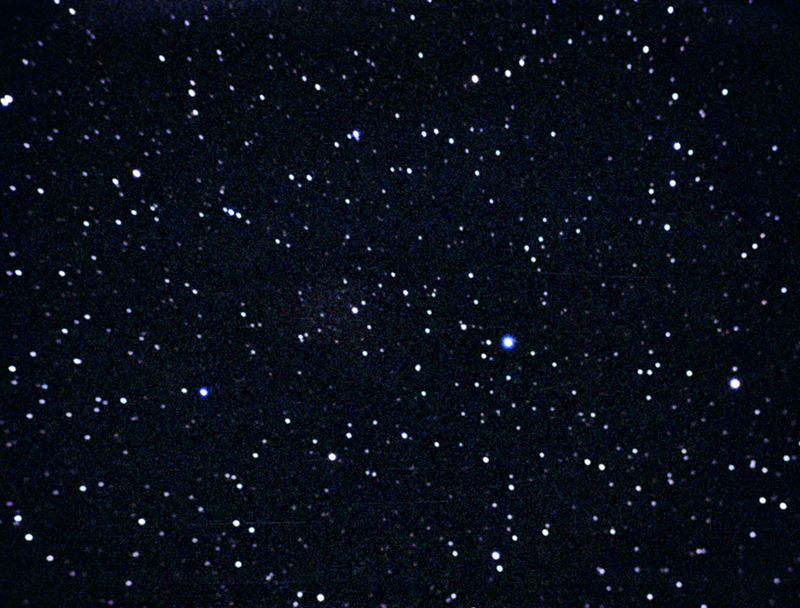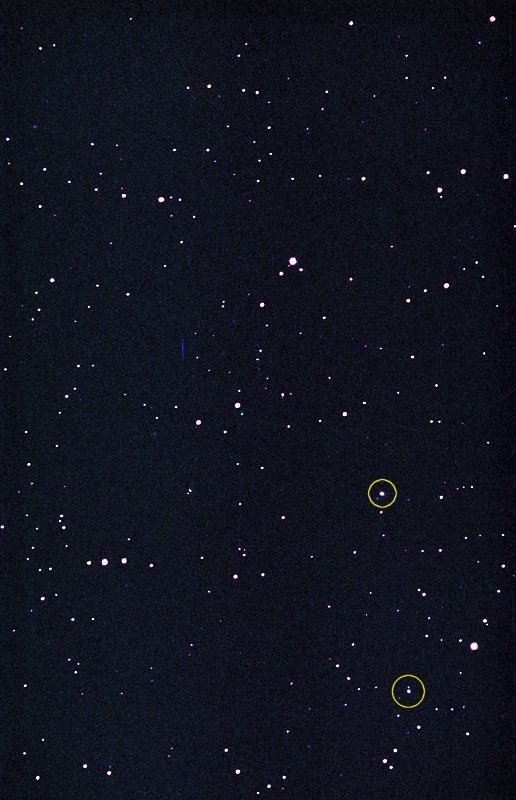
60 minutes exposure, Fuji Superia 200 film.
5" f/5 refractor at prime focus .

The Fornax Dwarf galaxy is a relatively close member of the Local Group, and is an excelent example of a dwarf ellipitical galaxy, which are believed to be the most common type of galaxy in the universe. It is located in a rather barren part of the sky, about 6 degrees north and 2 degrees west of the star Acamar.
Although rated at magnitude 8.3, the galaxy is extremely difficult to observe due to its very low surface brightness. In the photograph above, the galaxy is faintly visible just left of centre, while in the image below, it actually occupies most of the lower third of the image. However there is not a trace of it visible! With a 17.5" telescope and very dark skies I have only ever managed to detect the slightest hint of its presence. The problem is that the individual stars of the galaxy are very faint and very well scattered. On DDS images, the galaxy is visible as a slight increase in the overall star density. This faintness makes dwarf ellipitical galaxies very difficult to detect outside of the Local Group. Therefore although they are the most common type of galaxy in the Local Group, they are almost unknown elsewhere.

The Fornax Dwarf is home to about a dozen globular clusters, and 2 of these are easy objects for an 8" telescope. A unique situation where the globular clusters are much easier to observe than the parent galaxy!
The clusters are indicated by the circles in the image above. The top cluster is the 12.6 magnitude NGC 1049. This cluster is just at the northern edge of the galaxy. The bottom cluster is the 13.6 magnitude Fornax 4. This cluster is situated about half way between the centre of the galaxy and its southern edge. Observing these clusters is the best way of pinpointing the location of the galaxy.